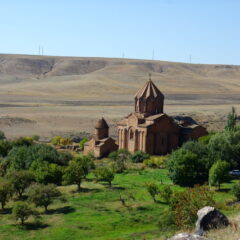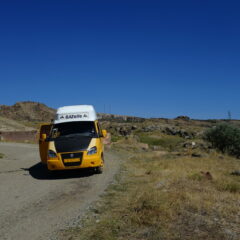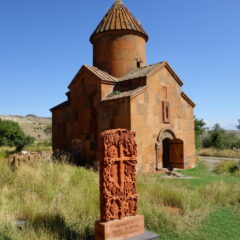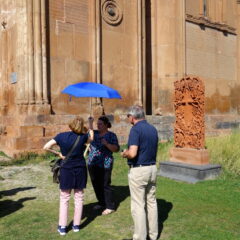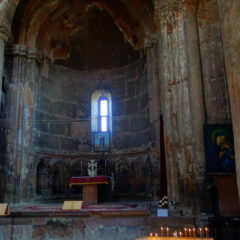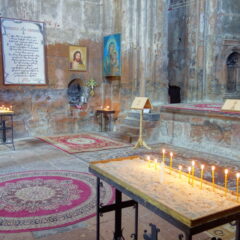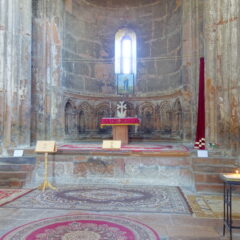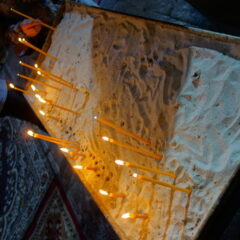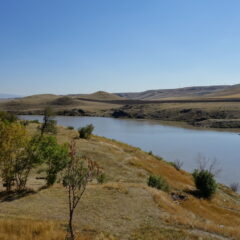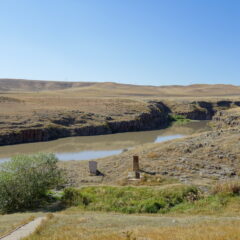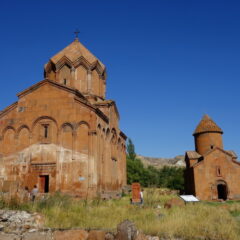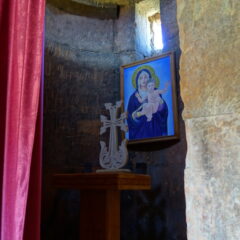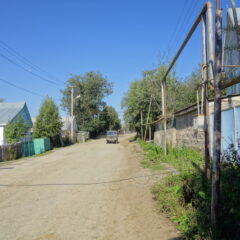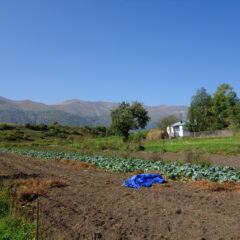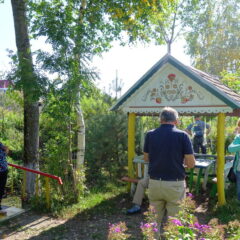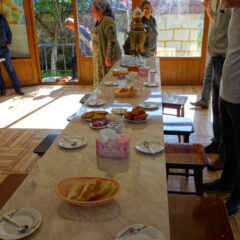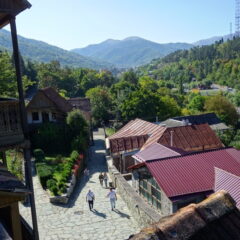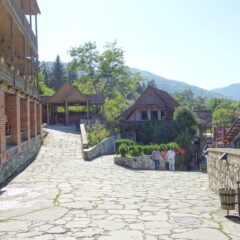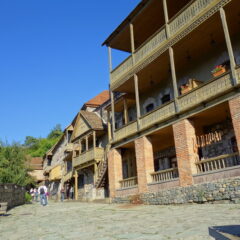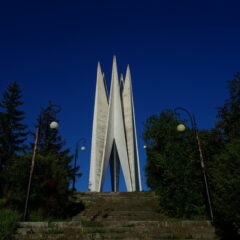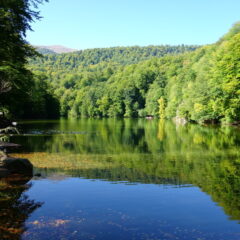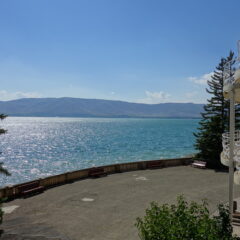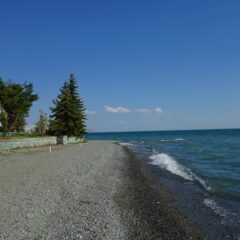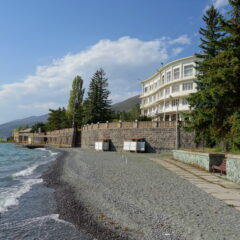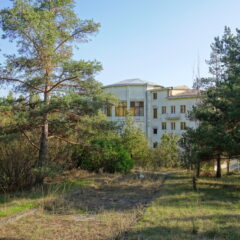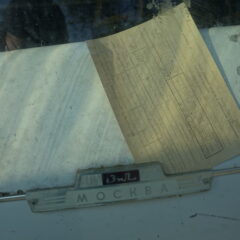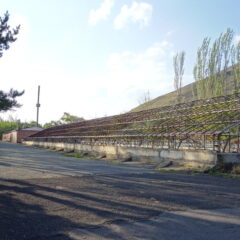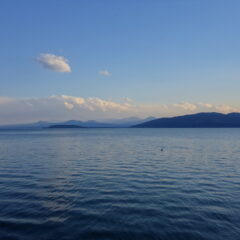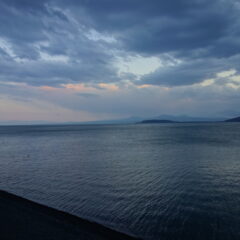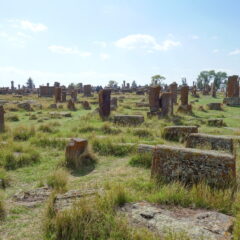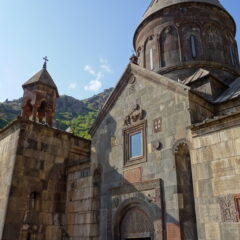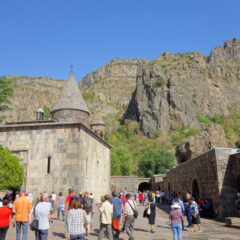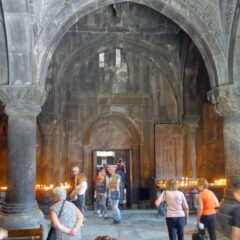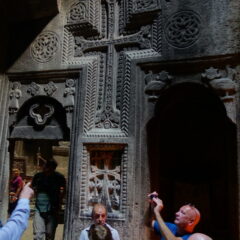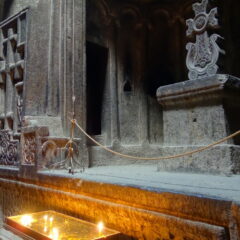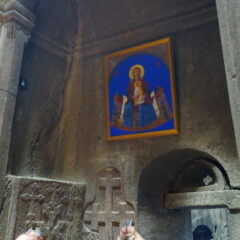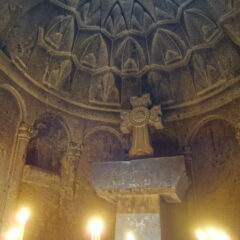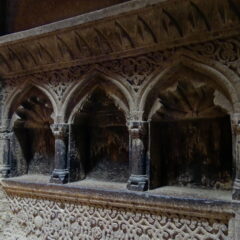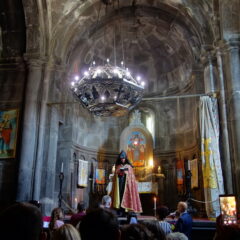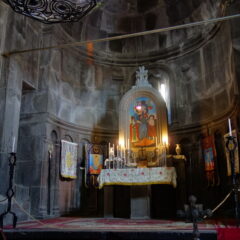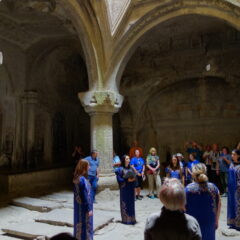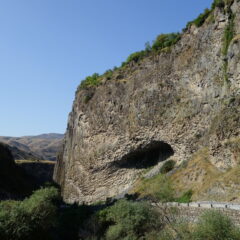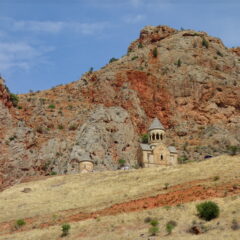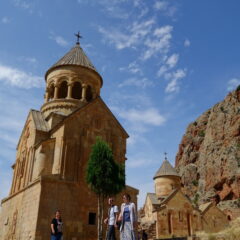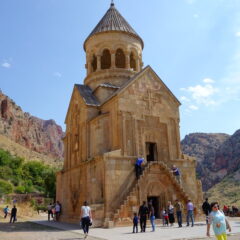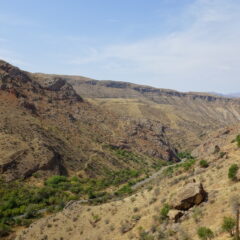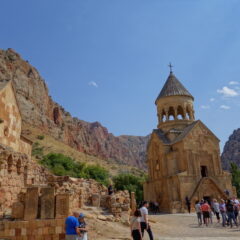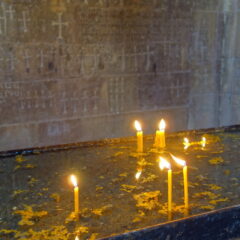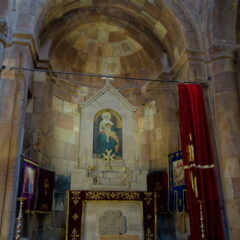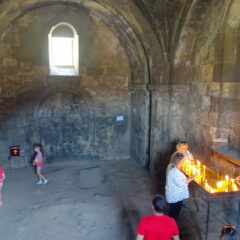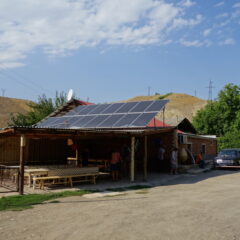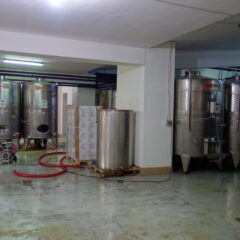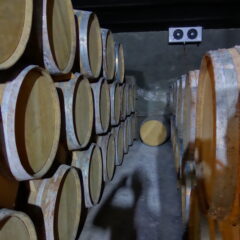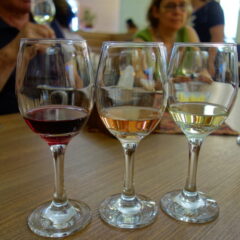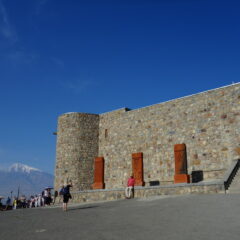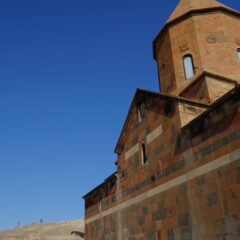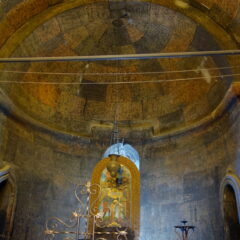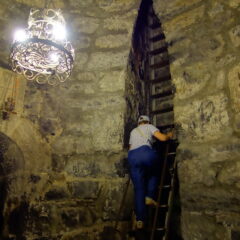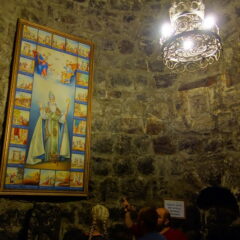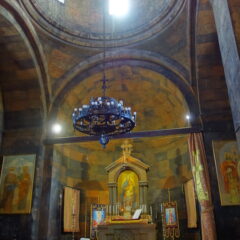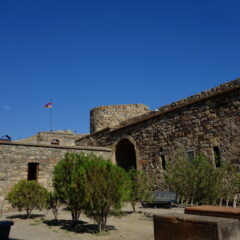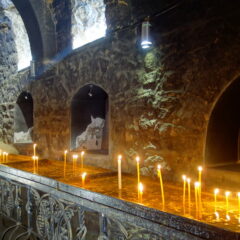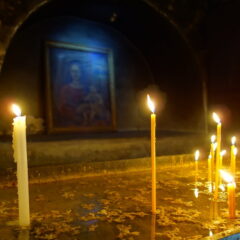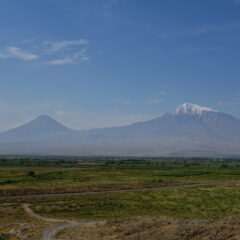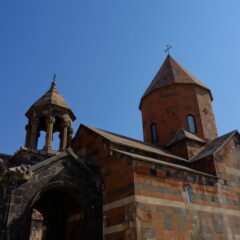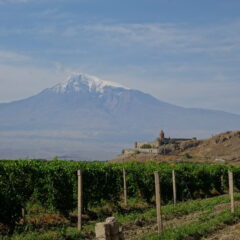A drive of about 1.5 hours (a good 80km) got us to the second stop for the days – Noravank Monastery (Նորավանք) – the “new monastery”.
Noravank – similar to Khor Virap – is sitting in a stunning location on a sort of cliff in the middle of a tight canyon – and features good views of the canyon.
The monastery was founded back in 1205 and main highlights are its two big churches, St. Astvatzatzin and St. Karapet.
St. Astvatzatzin (Holy Mother of God) was completed in the mid 14th century; a renovation of the roof structure happened in the late 1990s. St. Karapet is older, dating back to the early 13th century (though got destroyed twice over the centuries – each time followed by reconstruction).
We had a tour around the churches, along with – again – details and background. Eventually we made it back to the bus, as two more secular highlights were still ahead of us.
We had a quick drive over to Areni, where we had a late lunch with a local family. Food was good and plenty – and after we had finished the meal, we were invited, to have a vodka. Imagine our faces, when the vodka turned out to be a (fairly good) grappa.
With the bellies full, another short drive got us to the Areni wine factory. After a guided tour through the winery (no walking behind the bottling machine though), we were once more led into a tasting room and got to try the wines. Well – the whites did not convince me, the reds though were quiet nice.
From the winery it was back to Yerevan for a free evening. Some of us decided, to give Armenia’s national food chain Karas a try. So we walked over to the next store, took a table and – after we had worked out the language difficulties – were positively surprised by the choice, quality and the price. The concept actually reminded me of the one La Placinte is employing in Moldova.
